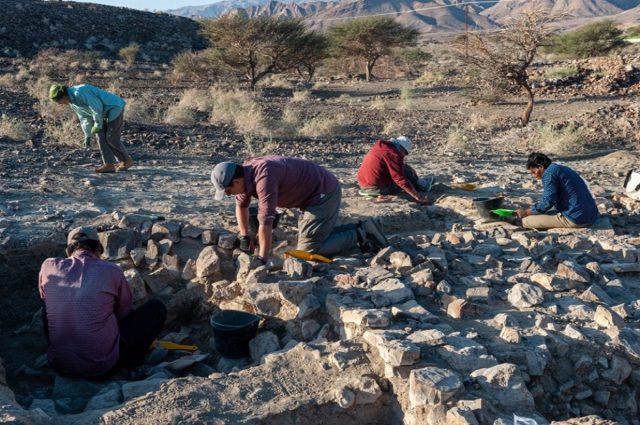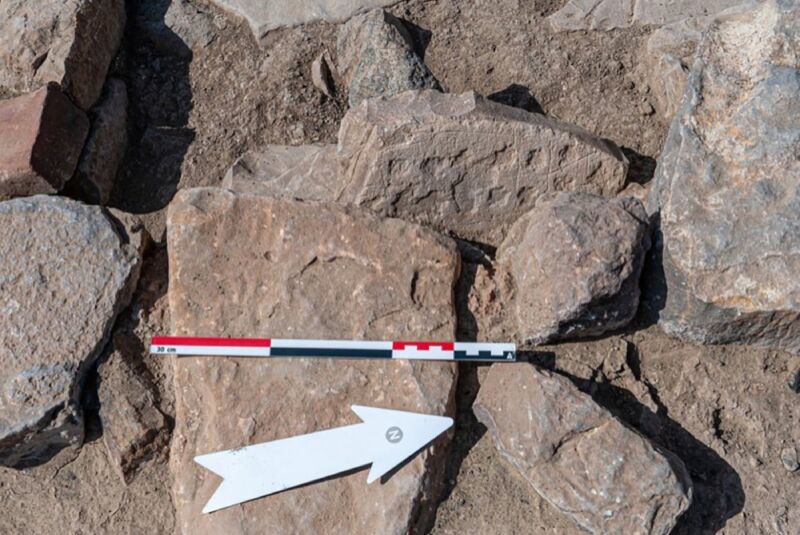Archaeologists working in Oman's Qumayrah Valley recently unearthed a rare artifact: a stone board game dating back some 4,000 years. The board features grid-like markings (possibly indicating fields) and holes for cups. It was found at a site near the village of Ayn Bani Saidah.
The excavation is part of an ongoing project to study the Iron and Bronze Age settlements in the Qumayrah Valley. The dig is a collaboration between Sultan al Bakri, director general of antiquities at the Ministry of Heritage and Tourism in Oman, and Piotr Bielinski of the Polish Center of Mediterranean Archaeology at the University of Warsaw. The area is one of the least-studied regions of the country, but the archaeological finds thus far indicate that the Qumayrah Valley was likely part of a major trade route between several Arab cities.
There is archaeological evidence for various kinds of board games from all over the world dating back millennia: senet and Mehen in ancient Egypt, for example, or a strategy game called ludus latrunculorum ("game of mercenaries") favored by Roman legions. The board just discovered at the Omani site might be a precursor to an ancient Middle Eastern game known as the Royal Game or Ur (or the Game of Twenty Squares), a two-player game that may have been one of the precursors to backgammon (or was simply replaced in popularity by backgammon).

An English archaeologist named Sir Leonard Woolley is credited with the rediscovery of the Royal Game of Ur after his team excavated five game boards at the Royal Cemetery at Ur between 1922 and 1934, all dating back to 3000 BCE. All the game boards featured two rectangular sets of boxes: one has three rows of four boxes each, while the other has three rows of two boxes each, with a bridge of two boxes joining them.
Nobody had any idea how to play the game, of course, until a curator at the British Museum named Irving Finkel translated a Babylonian clay tablet in the early 1980s that turned out to be a description of the rules. Like backgammon, it's essentially a race game in which players compete to see who can move all their pieces along the course of the board before their opponent. However, a 2013 paper examining nearly 100 Near East board games concluded that the layout of squares on the board (and the rules) likely evolved over time. A version known as Aasha was still being played in the Indian city of Kochi as recently as the 1950s.
Along with the board game, the Qumayrah Valley team also unearthed the remains of several large circular stone towers dating back to the Bronze Age, as well as one angular tower. The excavators also found evidence at one of the towers of copper smelting, which suggests the settlement was involved in the lucrative copper trade at that time, according to Bielinski. University of Warsaw team member Agnieszka Pienkowska told the Oman Daily Observer that "the function of these prominent structures at many Umm an-Nar sites still needs to be explained."



3175x175(CURRENT).thumb.jpg.b05acc060982b36f5891ba728e6d953c.jpg)

Recommended Comments
There are no comments to display.
Join the conversation
You can post now and register later. If you have an account, sign in now to post with your account.
Note: Your post will require moderator approval before it will be visible.